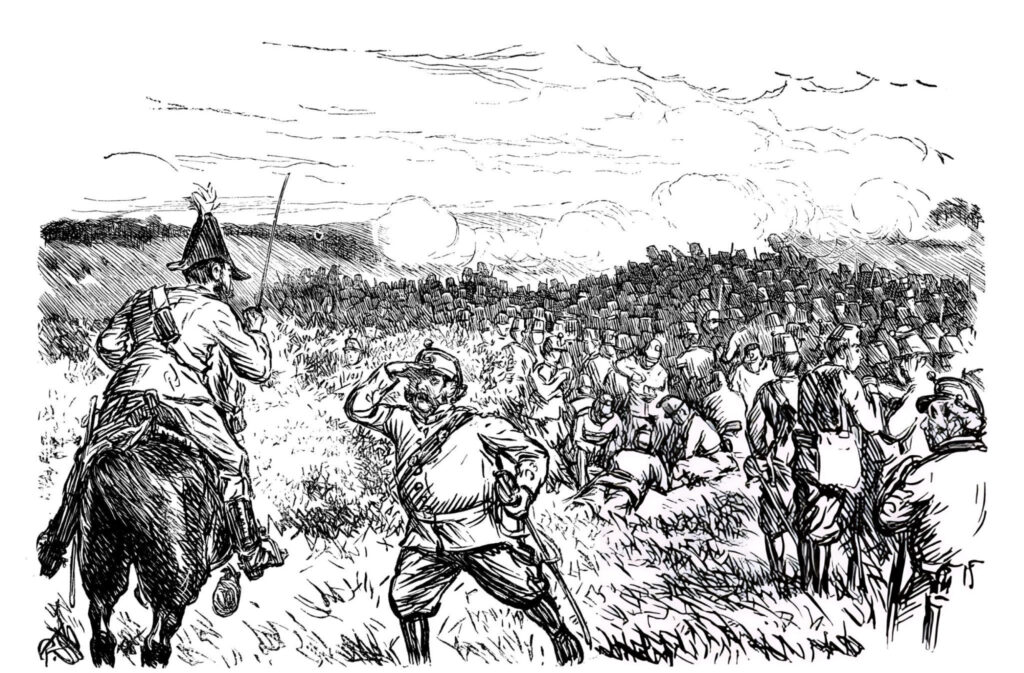The Peasants’ Revolt of 1381 was a major uprising in medieval England. It showed the people’s anger over economic troubles, social unfairness, and political issues. This blog explores the revolt’s causes, key events, and effects on England’s society and politics.
1. Historical Context: Seeds of Discontent
The Peasants’ Revolt happened in a time of turmoil in England. The 14th century saw wars, economic troubles, and the plague.
1.1. The Black Death and Economic Shifts
The Black Death (1347–1351) killed a third of England’s people. This led to a labor shortage, causing wages to rise. But, the rich wanted to keep wages low.
In 1351, the Statute of Labourers was passed. It froze wages and stopped workers from looking for better jobs. This made the poor very angry.
1.2. War and Taxation
The Hundred Years’ War (1337–1453) with France was expensive. The poor had to pay for it through taxes. The third poll tax in 1380 was especially hated.
1.3. Social Inequality

Medieval England was very divided. The feudal system kept peasants poor and under their lords. But, the Black Death changed things. Peasants started to question their place in society.
2. The Outbreak of Revolt
The revolt started in May 1381 in Essex and Kent. It was fueled by anger over taxes, economic struggles, and the desire for change. The movement was led by charismatic figures.
2.1. Triggering Events
The revolt was sparked by the 1380 poll tax. Tax collectors were aggressive, leading to violence in Brentwood, Essex. This was the beginning of the rebellion.
2.2. Spread and Organization
The revolt quickly spread to Kent. Rebels from both places worked together, showing a clear plan. This was not just a mob but a well-organized group.
The rebels attacked symbols of oppression. They destroyed records of feudal dues and homes of government officials. They wanted to end their exploitation.
3. Leadership and Ideology
Leadership and ideas were key in the revolt. Wat Tyler and John Ball were two important figures. They inspired the rebels with their words and actions.
3.1. Wat Tyler
Wat Tyler led the Kentish rebels. His background is unknown, but his leadership was crucial. Tyler spoke for the people and negotiated with the authorities.
3.2. John Ball
John Ball, a rebellious priest, was a key figure in the uprising. He spoke out against the unfairness of feudalism. Ball famously asked, “When Adam delved and Eve span, who was then the gentleman?” This question challenged the idea that some people were born to rule.
3.3. The Rebels’ Demands
The rebels had many demands. They wanted:
- The end of serfdom and manorial dues.
- Lower taxes.
- Corrupt officials to be fired.
- More equality and justice.

4. The March on London
In June 1381, thousands marched on London. Their actions showed their anger and organization.
4.1. Entry into London
On June 13, the rebels entered London. They were helped by city people who opened the gates. They then attacked key places of power.
The Savoy Palace, John of Gaunt’s home, was looted and burned.
4.2. The Execution of Simon Sudbury
The rebels killed several officials, including Simon Sudbury. Sudbury was blamed for the poll tax. His death at the Tower of London was a bold statement against the elite.
5. The Meeting with Richard II
The revolt’s climax was a meeting between the rebels and King Richard II. This showed the revolt’s complexity and its eventual failure.
5.1. The First Meeting at Mile End
On June 14, Richard II met the rebels at Mile End. He agreed to their demands, including ending serfdom. This made some rebels leave.
5.2. The Betrayal at Smithfield
The next day, Richard met Wat Tyler and others at Smithfield. The meeting turned violent. Tyler was killed by William Walworth, the Mayor of London. This marked the revolt’s end.
6. The Aftermath and Consequences
The revolt was crushed, but it changed English society and governance.
6.1. Immediate Repression
After Tyler’s death, the rebellion failed. The king’s forces took back control. Many rebels were killed, and Richard II broke his promises.
6.2. Long-Term Impact
The Peasants’ Revolt had lasting effects:
- Economic Changes: The revolt made landowners treat peasants better. Over time, serfdom became less common.
- Political Awareness: The revolt showed the power of working together. It inspired future fights for justice.
- Challenge to Authority: The revolt questioned the idea that kings were above the law. It set the stage for future challenges to power.
7. The Legacy of the Peasants’ Revolt
The Peasants’ Revolt is a key part of English history. It was a big uprising in Europe that wanted social equality. Even though the rebels didn’t win, their bravery and determination are still remembered today.
7.1. Cultural Representations
The revolt is remembered in many ways, like in books, art, and movies. It has inspired many to think about fairness and the power of the common people.
7.2. Lessons for Modern Times
The Peasants’ Revolt teaches us about the risks of not having fairness in society. It shows how important it is to listen to people’s problems before things get worse.
Conclusion
The Peasants’ Revolt of 1381 was a turning point in medieval England. It was sparked by hard times and unfairness, showing the big problems in society. Though it failed, its impact on English history is huge.
The rebels of 1381 wanted a better world. Their struggle for justice and equality is a strong reminder of standing up against unfairness.
